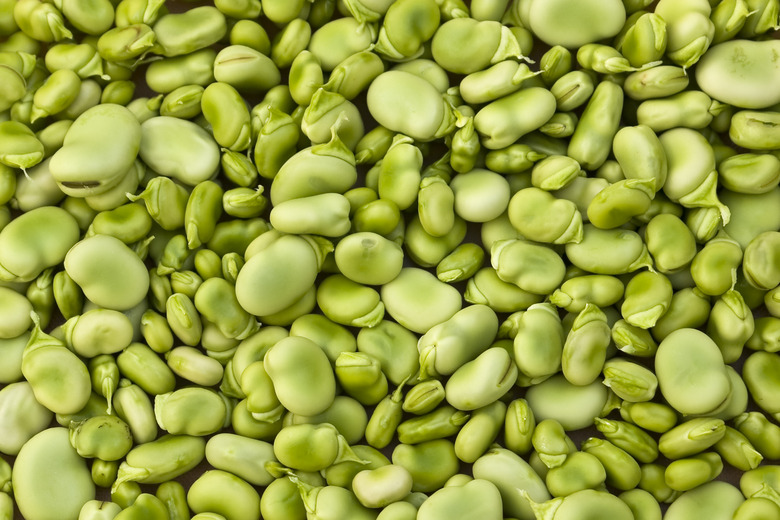How To Soak Lima Bean Seeds
Pretreatments, such as soaking seeds in water, is not necessary when growing lima beans from seed, although it can be helpful if done correctly.
Lima beans (Phaseolus lunatus) come in bush varieties, such as Clarks Bush (Phaseolus lunatus 'Clarks Bush'), and pole bean types, such as King of the Garden (Phaseolus lunatus 'King of the Garden'), both of which are annual crops that must be started each year from seed.
Lima bean seeds germinate very quickly when planted in warm soil. Soaking is not required when starting them, and it can damage the seeds if they are left to soak for a long period of time. However, some growers opt to pre-soak lima bean seeds for a short period of time to hasten germination.
Warning
Lima beans are particularly susceptible to cold water imbibition, which means they tend to soak up a lot of moisture when submerged in water or sown in very wet soil. This increases the likelihood that it will break apart or be otherwise damaged, which makes it less likely to sprout.
Soaking Lima Beans
The process of soaking lima beans is very simple, but it must be done for the right amount of time, or the seed could be damaged. Lima beans are particularly susceptible to cold water imbibition, which means they tend to soak up a lot of moisture when submerged in water or sown in very wet soil. It is particularly a problem when the seeds are very dried out.
A lima bean that has absorbed a lot of water will tend to break apart or develop other damage, which makes it less likely to sprout. Cold water imbibition occurs when the seed has been in water for longer than 24 hours, so short periods of soaking will not cause damage to most lima beans.
- Soak lima beans for one to four hours in a bowl of warm water prior to planting.
- Do not soak lima bean seeds for longer than four hours because they may rot or split apart.
Planting Lima Beans
Lima beans grow best in full sun with loamy, fast-draining soil.
Warmth is the most important factor when planting lima beans, so wait until two weeks after the last frost before planting. Ideally, the soil should be between 75 and 85°F, but the seeds will germinate reliably well at temperatures above 65°F.
Space the seeds 4 to 8 inches apart at a depth of 1 to 1/2 inches. Space rows of bush-type lima beans 30 inches apart to provide you with enough space to walk between the rows.
Warning
Never plant lima bean seeds when soil temperatures are below 60°F because they will rot.
Water the seeds whenever the soil feels slightly dry on the surface and watch for seedlings in five to eight days. Pole-type lima beans need a structure to climb, so either plant the seeds along a wire fence, build a trellis or install a tripod of sticks above the seedlings as they start to grow. Train the seedlings to twine around the structure and help secure the stems with twine.
Growing Lima Beans
Lima beans need regular watering, mulching and feeding to keep them growing well during the summer months. Provide 1 inch of water each week with a little extra during hot, dry weather. Check the soil with your fingertip and water only if the soil feels dry in the tip inch.
A 2-inch-thick layer of lightweight mulch, such as straw spread between the plants, will help conserve soil moisture and keep down weeds. Just be sure to leave a gap of 2 inches or so between the mulch layer and the bottom of the plant to prevent stem rot.
Fertilizer will help support healthy growth in vigorous plants, such as lima beans, but too much nitrogen will produce more leaves than beans. Use a low-nitrogen fertilizer and apply it every week at half the amount recommended on the label. Water in the fertilizer after spreading it.
Tip
Bone meal is a low-nitrogen organic alternative to traditional chemical fertilizers.
